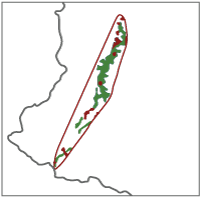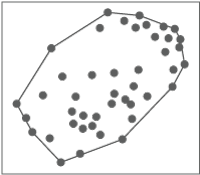ADVANCED SEARCH
xFILTERS
Refine the species list using the filters provided below. Although not all species have a distribution model they may have options to advance their development.
Statistics on validated model
x
Occurrences
EXTENT OF OCCURRENCE
EXTENT OF OCCURRENCE
xThe extent of occurrence (EOO) is defined as the area contained within the shortest continuous imaginary boundary which can be drawn to encompass al the known, inferred or projected sites of present occurrence of a taxon, excluding cases of vagrancy (IUCN 2013).
MCP on models: area of minimum convex polygon computed on a species modeled distribution (Figure 1, Renjifo et al. 2014).

MCP on occurrences: area of the minimum convex polygon computed on all species occurrences. (Figure 2, IUCN 2013)

REPRESENTATIVENESS IN PROTECTED AREAS
REPRESENTATIVENESS IN PROTECTED AREAS
xThis is the percentage of a species distribution that is protected under all types of protected areas and discriminated by National Parks, private reserves and other protected area types (forest reserves, regional parks, integrated management districts and recreational areas). The total representativeness may not match the summation of national parks, private reserves and other reserves if there is any overlap between protected area types.
FOREST LOSS
FOREST LOSS
xThis graph describes the percentage of forest within species distribution, according to the deforestation maps developed by IDEAM and projected deforestation scenarios proposed by Etter & Arevalo (2014) projected to the year 2030.